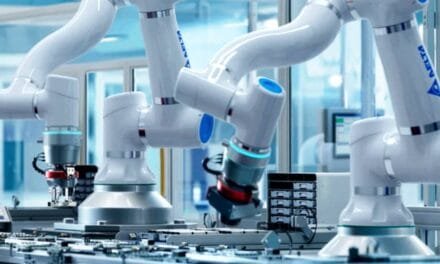This article explores the role of R&D in the food industry, the impact of technology and automation, andthe importance of sustainability to drive sectoral growth. Rajat Baisya, delves into how India can enhance its manufacturing capabilities, reduce costs, and leverage innovation to become a global leader in food processing.
Table of Contents
India is on the threshold of becoming of leading global economy and is fast integrating with the global economy. Our GDP stands at USD 2.44 trillion, and per capita is USD 1850, growing at a rate of 6.7%. As the economy is growing contribution of the service sector continues to grow, and currently at 60%, industry 24% and agriculture only 16% of our GDP. We are the 10th largest economy in terms of nominal GDP and the 3rd largest in terms of purchasing power parity. But we still have a long way to go. Although agriculture contributes to 16% of our GDP but over 50% of our workforce is engaged in agriculture only.
We need to have a common understanding of what we mean by sectoral growth. Most importantly, domestic market growth and international market growth. Growth is normally determined both as value growth and volume growth, and as value growth is often misleading, as it also includes an inflationary factor in price increases, we need to measure volume growth.
Currently, the real term growth stands at about 8%. Other indicators are investment, including FDI, market penetration, and revenue from new product development. Businesses normally try to derive at least 25% of sales revenue from new products, wealth or value generation, employment, knowledge creation, and innovation. In a significant part of these factors, R&D in the food industry can impact, provided it is directed in the right direction (see “Why R&D in food industry is important?”).
Role of R&D in Food Industry
R&D effort in the processed food industry so far has been pioneered by large private and multinational companies, who have created products for their own survival and growth. Public-funded research in the food processing industry has contributed earlier, but nothing much in the current context. In select sectors like spices, flavours and condiments, food ingredients, marine, and dairy products, indigenous research has made contributions, and that too in the past.
By R&D in the food industry, we normally mean product and process improvement, including how R&D can reduce food processing costs, and the future of R&D in the food processing industry in India. The processed food industry, however, needs comprehensive and holistic development for a competitive advantage. Process innovation should help the processed food industry to be cost-competitive and improve quality and productivity. Nothing much has been done in these areas as yet. What is being done is a piecemeal, localised effort and not an integrated development.
If we take an example of pineapple comparable figure of farm-level productivity is here, we are one of the lowest at 16 MT/hectare, when it is much higher in other countries. For Brazil productivity of pineapple farming is 40 MT/Hectare, and for Thailand 25 MT/hectare. But only R&D intervention will not be able to deliver comparable productivity; we need a holistic and integrated approach.
In terms of value addition, we are again very low at 12, and now it is 23% in China. One of the reasons for low-value addition is low price recovery, but in the international market, we cannot expect higher price recovery, and therefore, the only solution is cost reduction.
Need for Breakthrough Research and Global Collaboration
We need breakthrough research and development, and global collaboration in Indian food R&D. In Europe, they have competency centres funded by the EU to help SME sectors to be competitive. To speed up the development effort, we need to collaborate and co‑create, and that is what is done in developed countries.
SME support centres for food processing R&D and competency centres for Indian food manufacturers are critical. The Make in India initiative was aimed at attracting foreign investment to set up a manufacturing plant here to produce and sell globally. To make India a global manufacturing hub, we need to be competitive, but our manufacturing competitiveness index is still low. Can the role of innovation in food industry competitiveness help? Which needs to be talked about?
We are now passing through 4th Industrial revolution. 1st industrial revolution was triggered by the invention of steam by James Watt and we realised the power of steam. 2nd industrial revolution was driven by the invention of electricity and internal combustion engines leading to the development of automobiles. Coal and electric power were at the root of industrial development which continued till late fifties.
Automation and AI in Food Processing
The 3rd industrial revolution began in 1960, first by PC and later on by the internet, which has revolutionised the business environment 4th industrial revolution that we are now passing through will be shaped by a series of innovations, including driverless cars, smart cities, lighter and tougher material, and supercomputing. China has already claimed that they have developed faster chips than a supercomputer. Nanotechnology, biotechnology, artificial intelligence, the Internet of Things, blockchain technology, sequencing of the human genome, and synthetic biology will remarkably change the way of life and society as such.
The 3rd industrial revolution began in 1960 with PCs and later with the internet. The impact of Industry 4.0 on Indian food manufacturing, including robots and cobots in food industry automation, IoT in food processing plants in India, and the use of automation in dairy and food processing, is becoming central to survival and sustainability.
How robots in food industry can make a difference—automation with cobots reduces cost, increases precision, and reduces product risk. For insights into how automation is reshaping the industry, check PFI’s discussion on how cobots are revamping the F&B sector, or read about top technologies transforming food processing like high pressure processing (HPP), Pulsed Electric Field Processing (PEF), microwave, ultrasonic, etc. (See How Top-10 Technologies Transforming the Food Processing Industry).
Prof Klaus Schwab, Founder Chairman of the World Economic Forum, has studied the performance of three large companies in Detroit in 1990 & at Silicon Valley in 2014 and found that in terms of market capitalisation, 3 times the value has been created by 10 percent of the employees, which means productivity has gone up 30 times in two decades.
Things are going to be drastically different in the next couple of years, and industries all over are gearing up for that, including food processing industries, for survival and, more importantly, for sustainability. Robots and Cobots are helping food processing industries to reduce costs and also for performing processes faster and with more precision, reducing product risk, and improving the quality.
There is extensive use of artificial intelligence and automation. Logistics functions and material handling functions are completely automated. I have visited a large dairy processing plant at Novo Mesto. Batch weighing, mixing, packaging, warehousing, despatch everything is computerised and working on a pre-programmed control based on sales order processing. In all these functions there is no human intervention. Hardly you can see a few people working in the plant laboratory.
Sustainability and Green Processing
Green processing, reverse supply chain, green supply chain, complete utilisation of waste, sustainability & environment friendliness are the key concern areas. Enzyme-assisted food production in order to increase yield and reduce extreme treatment to keep nutritional factors better is widely practised now. Also, enzyme engineering for better storage stability and the use of solar and wind energy are widely prevalent.
Innovative methods are also used for better microbial control in food processing, including microwave and radio-frequency heating, pulsed electric fields (PEF), high-pressure processing (HPP), ionizing radiation, ohmic heating (OH), treatment with ultraviolet light, and ozonisation, ultrasound, etc. are followed. Process technology Innovations are directed to improve product quality, shelf life, and functionalities, in addition to increased environmental adherence and which improve marketability. Resistant starch is a form of carbohydrate that has its own unique properties. It behaves like starch, but when it hits the digestive system, it acts like fiber. Resistant fiber has been proven to be beneficial in reducing cancer, lowering cholesterol, and providing protection against cardiovascular diseases. Resistant starch is also known as a fat-burning ingredient, with its properties of aiding the body in metabolism and burning fat.
Manufacturing Challenges and Competitiveness Drivers
Global manufacturing challenges as revealed from the Deloitte Global Manufacturing Competitiveness survey 2016 are: Regulation and traceability, Product Development and Innovation. The manufacturing skill gap, Rising Healthcare costs, Environmental concerns and considerations Key drivers for manufacturing competitiveness are: talent, Cost competitiveness. Workforce Productivity, Suppliers Network, Legal & Regulatory system, Education Infrastructure, Physical Infrastructure, Economy, Trade, Financial and Tax system. Innovation Policy and Infrastructure, Energy Policy. Local Market Attractiveness, Healthcare System.
Embracing advanced technologies to drive competitive advantage. Advanced technologies are increasingly underpinning in global manufacturing competitiveness.
Leveraging strengths of ecosystem partnerships beyond traditional boundaries. Adoption of innovation strategies aimed at embracing a broader ecosystem approach, developing and taking advantage of integrated manufacturing and technology clusters and partners, will be a growing imperative for going forward 2016 Deloitte Global survey report on manufacturing competitiveness is out now and India stands at 11 when China is still at no 1 and USA at no 2 and Germany at No 3 position.
However, by 2020, India is projected to go up to the 5th position, and China to come down to the 2nd position, the USA 1st, and Germany will be 3rd in the ranking. Talent and technology are making all these changes, and India needs to focus on both these elements in addition to infrastructure. And on supplementary ratings, India compares well on things like quality, availability, and cluster development with other lead countries in the race.
If we look at how costs stack up in relation to product pricing, it will reveal that manufacturers, marketers have only 7 to 10% net margins, and the rest are all costs to be distributed. Prime cost includes raw materials, packaging materials, process costs, direct labour, and standard wastages. If R&D in the food industry focuses only on product and process, the intervention is only within 20% of the total cost. Our R&D is working within the realm of prime cost, which never exceeds 20% of the end selling price. R&D in the food industry has to create significant innovation in all other areas, and that is what is happening now through technology. Logistics is another area that can significantly reduce costs. Our logistics costs are about 15% of the product costs compared to 8% in developed countries. Technology and infrastructure will help in reducing logistics costs.
Ensuring Food Safety and Consumer Awareness
In food safety, I would only like to say that it is the responsibility of the processors. Unsafe food cannot survive in the marketplace. One incident can bring down the company to its knees. You will remember what happened to Nestlé even in a fabricated case. FSSAI, as well as other standards, are to be taken as minimum standards. Businesses will develop differentiated standards to create their unique value proposition in the marketplace. FSSAI and other regulators should only play the role of facilitator and educator. Massive consumer education will solve the problem. Knowledgeable and enlightened consumers will not allow spurious products or unsafe products to be in the market. Making public alert, streamlining licensing process, fees linked with production and sales, and not with installed capacity, faster redressal of consumers, and processors’ complaints will help. Outsourcing services will help.
FSSAI has to provide leadership, remove the perception of fear from the mind, and inculcate friendliness will help. FSSAI has become a monolith now – it needs to be divided into industry verticals to be managed better. Is FSSAI performing this role now is the question? For more on FSSAI’s evolving role and initiatives, visit FSSAI’s upgraded food safety compliance platform.
Future of R&D in Food Industry
To sum up, the future of R&D in the food industry can only impact sectoral development if it intervenes holistically across functions. How R&D can reduce food processing costs, the future of R&D in the food processing industry in India, and global collaboration in Indian food R&D must be core focus areas. The SME sector needs a Knowledge and Innovation Centre to build a competitive edge. Sustainability and environment alignment remain critical, even at a higher cost. Ultimately, everything must be market and consumer-driven, otherwise, failure is inevitable. For insights into how automation is reshaping the industry, explore how cobots are revamping the F&B sector.
The author is the chairman of Strategic Consulting Group and served as Professor and Head of the Department of Management Studies, IIT Delhi.
Frequently Asked Questions (FAQs)
R&D in India’s food processing industry has primarily focused on product and process improvement, mostly driven by large private companies. However, there’s a growing need for holistic R&D efforts that impact cost reduction, innovation, sustainability, and competitiveness across the entire value chain.
By optimizing processes, improving energy efficiency, introducing automation, and developing value-added products, R&D can significantly reduce processing costs. It also improves productivity and reduces waste, leading to enhanced profitability.
Key technologies include automation, artificial intelligence, IoT, enzyme engineering, pulsed electric fields (PEF), high-pressure processing (HPP), robotics and cobots, blockchain for traceability, and sustainable energy sources like solar and wind.
India’s farm-level productivity and value addition are significantly lower compared to countries like Brazil and China. For instance, pineapple productivity is 16 MT/hectare in India versus 40 MT/hectare in Brazil. Value addition in India is 12% compared to 23% in China.
Industry 4.0 refers to integrating smart technologies like AI, IoT, and robotics into manufacturing. In food processing, it enables cost savings, enhanced precision, real-time quality control, and data-driven decision-making.
Green food processing uses eco-friendly methods to reduce environmental impact. This includes renewable energy, waste minimization, and enzyme-assisted processing. It is essential for achieving sustainability in the food sector.
India’s logistics costs are about 15% of product costs compared to 8% in developed countries. Streamlining logistics through automation and better infrastructure can significantly boost competitiveness and profitability.
Educated consumers demand higher safety standards, pushing companies to maintain quality. Aware consumers are also better equipped to identify and reject unsafe or substandard food products, improving the overall safety landscape.
Competency centres support SMEs in adopting advanced technologies, improving product quality, and staying competitive. These centres provide technical expertise, innovation resources, and collaborative platforms vital for growth.
India can become a global food hub by strengthening infrastructure, focusing on R&D and sustainability, adopting Industry 4.0 technologies, improving logistics, and building skilled talent pipelines. Global collaboration and supportive policy frameworks are also key.
'Processed Food Industry': The Voice of Food Processing Industry
Processed Food Industry (PFI) is a leading monthly B2B magazine (ISSN 09721649) published from New Delhi, serving the food processing sector since 1997. With over 27 years of continuous publishing, PFI has built a trusted reputation as a reliable source of industry insights.
For companies aiming to tap into the fast-growing Indian and South Asian markets, PFI offers a strategic platform across print, web, and social media to build strong brand visibility. Supported by experienced technical writers, we help craft impactful content that connects with your customers and drives results.
As India’s food industry rapidly expands through innovation and efficiency, now is the time to position your brand at the forefront. Request our 2025 media kit to fine-tune your marketing strategy, increase your visibility, and convert potential customers into valuable conversations. Additionally, ask for a sample copy of our monthly magazine and experience the quality and relevance we deliver.
Let us help you define your role in the future of the food processing industry.
Have a news or topic to share with industry? Write to us editorial@pfionline.com

















